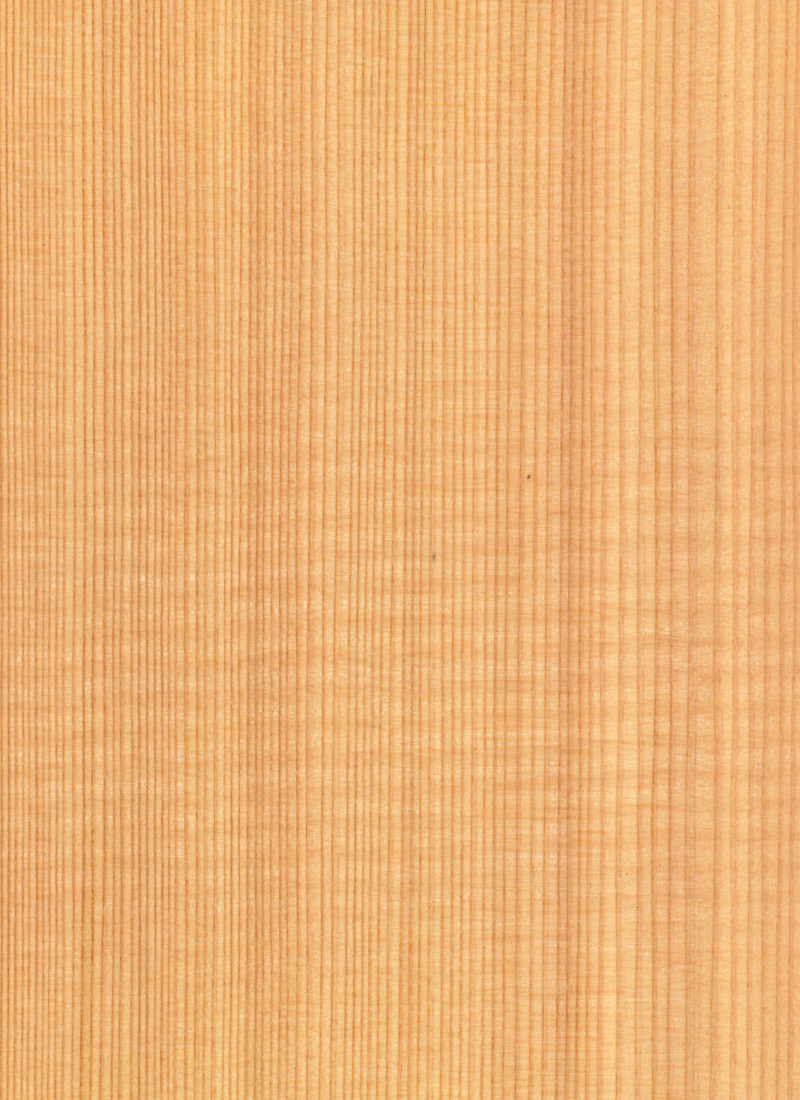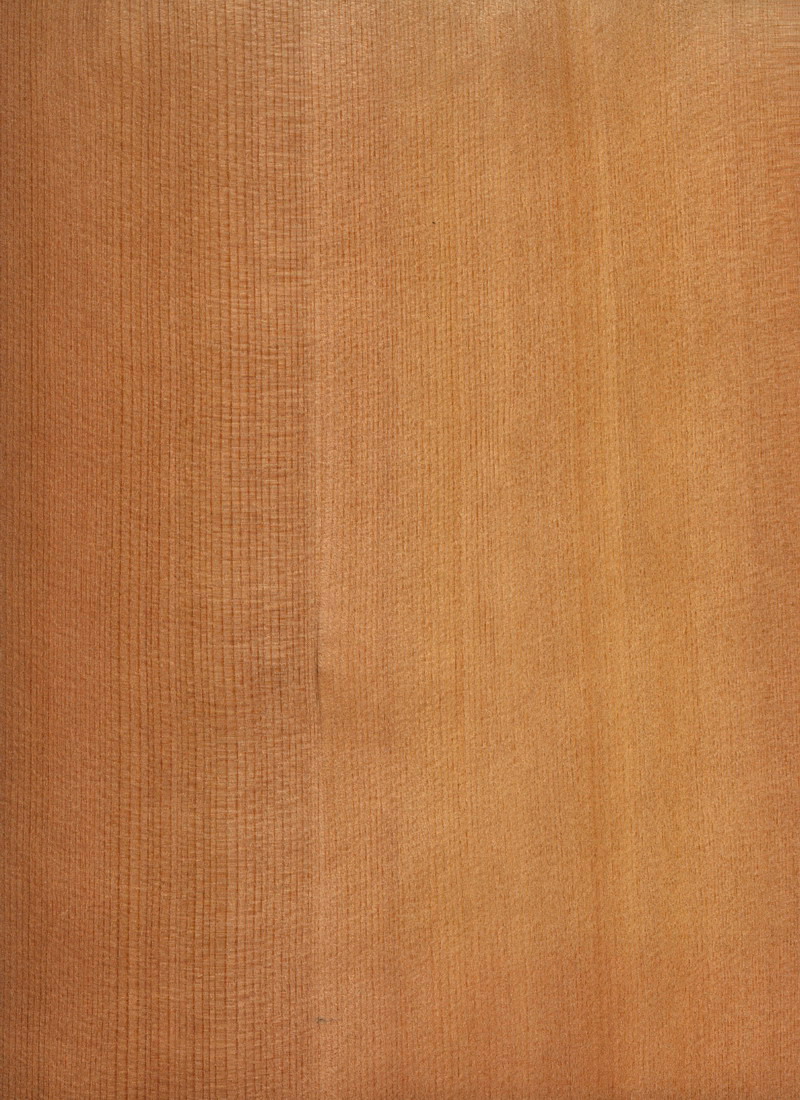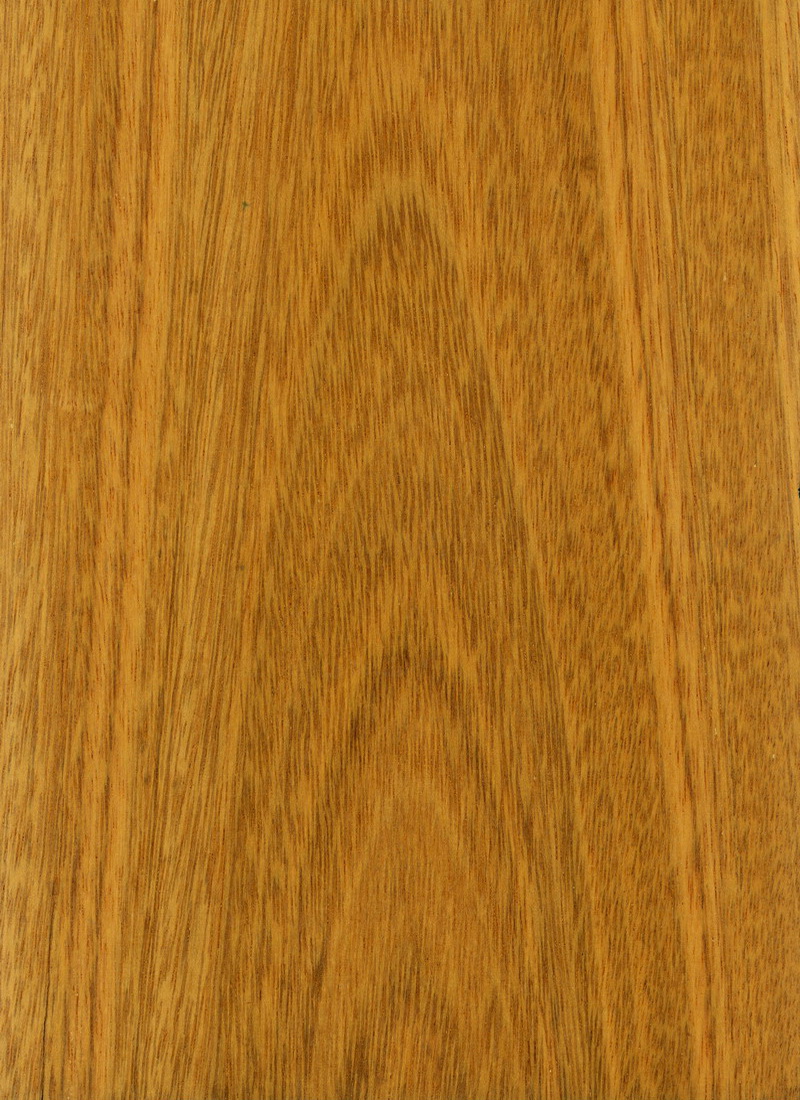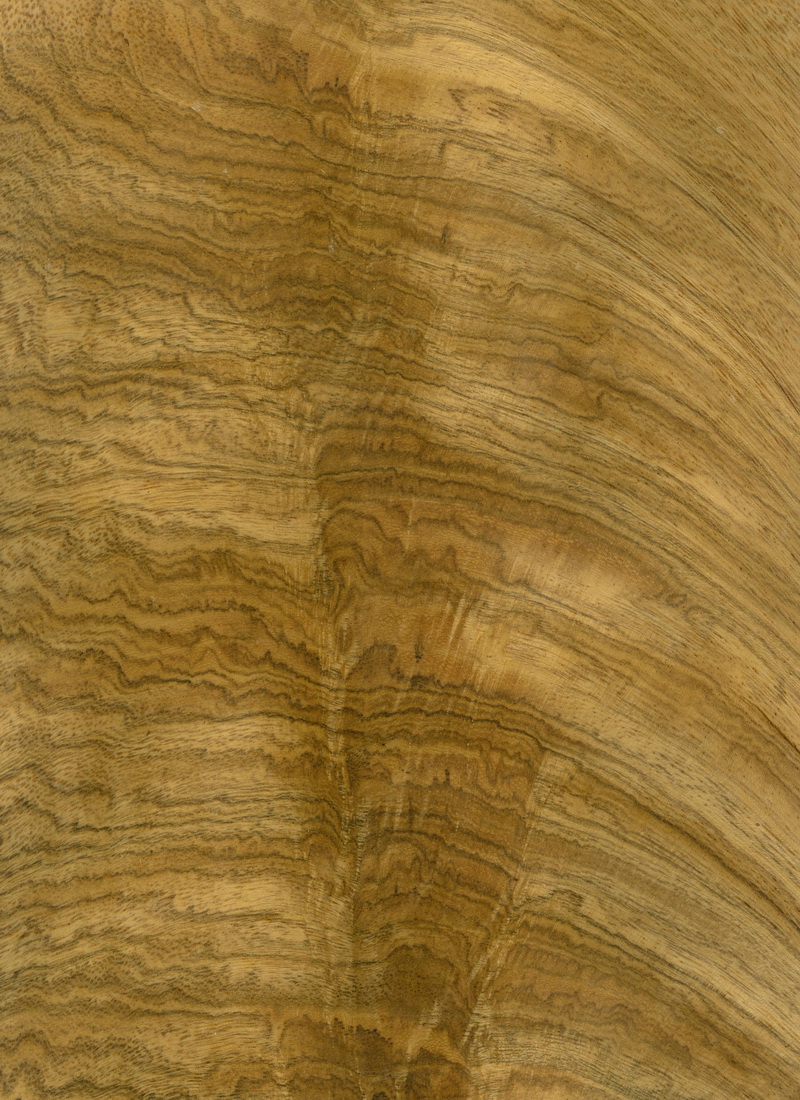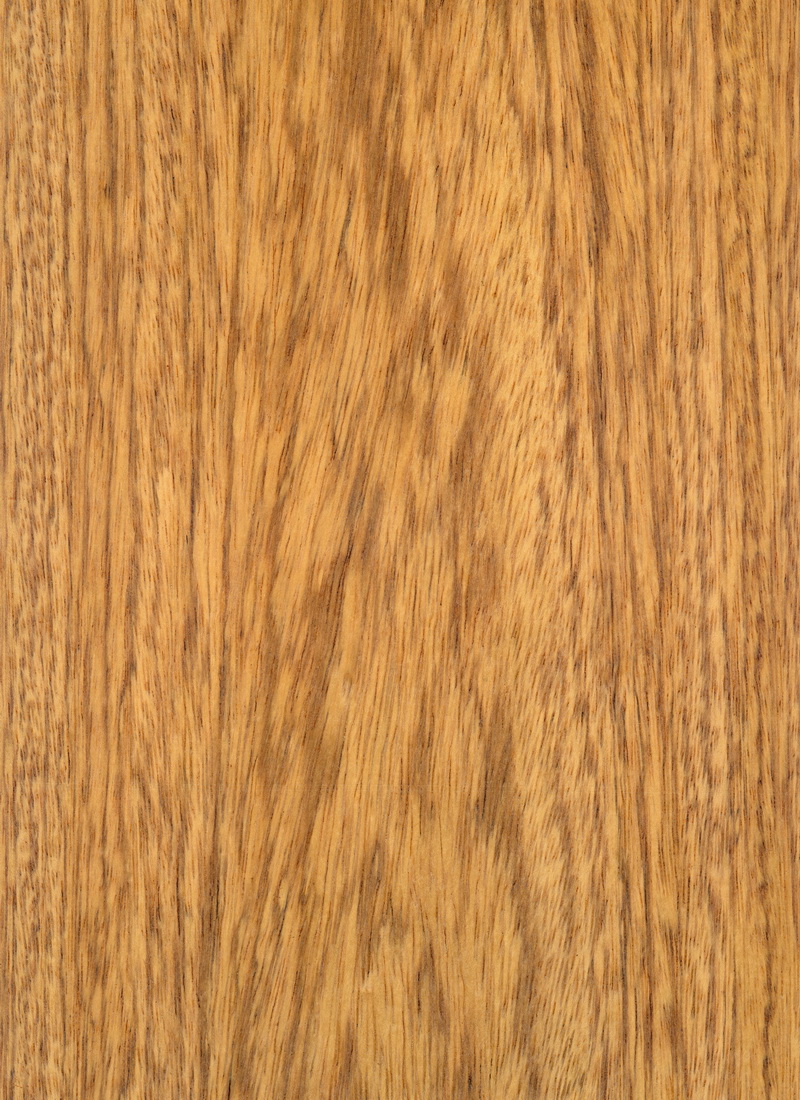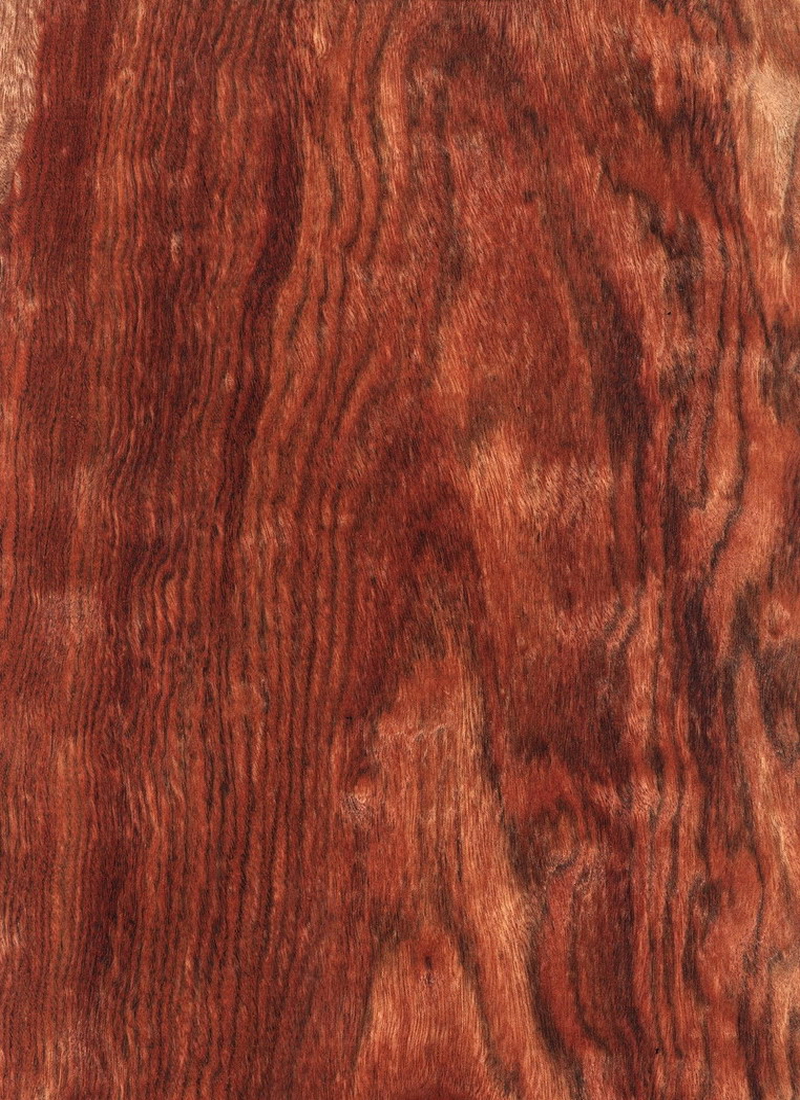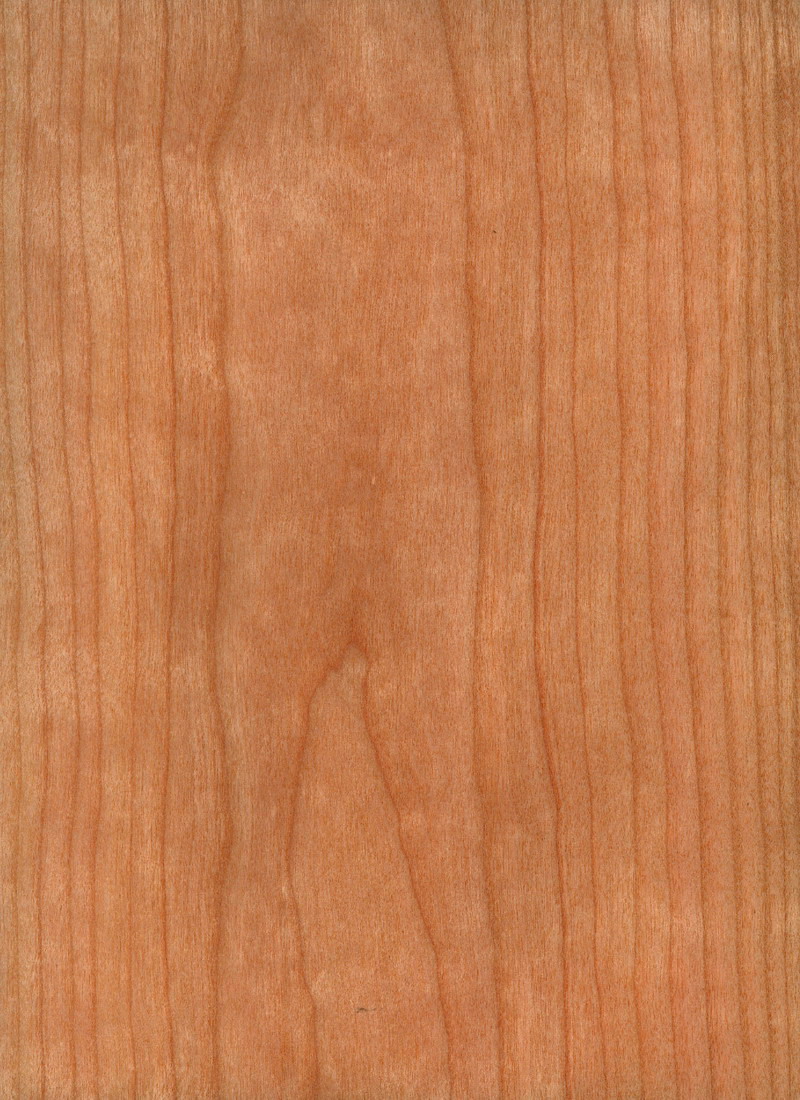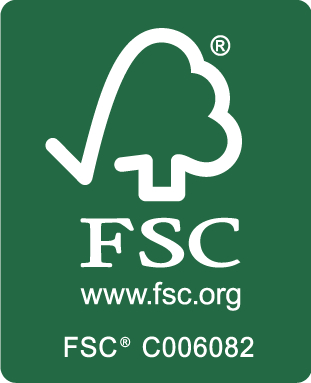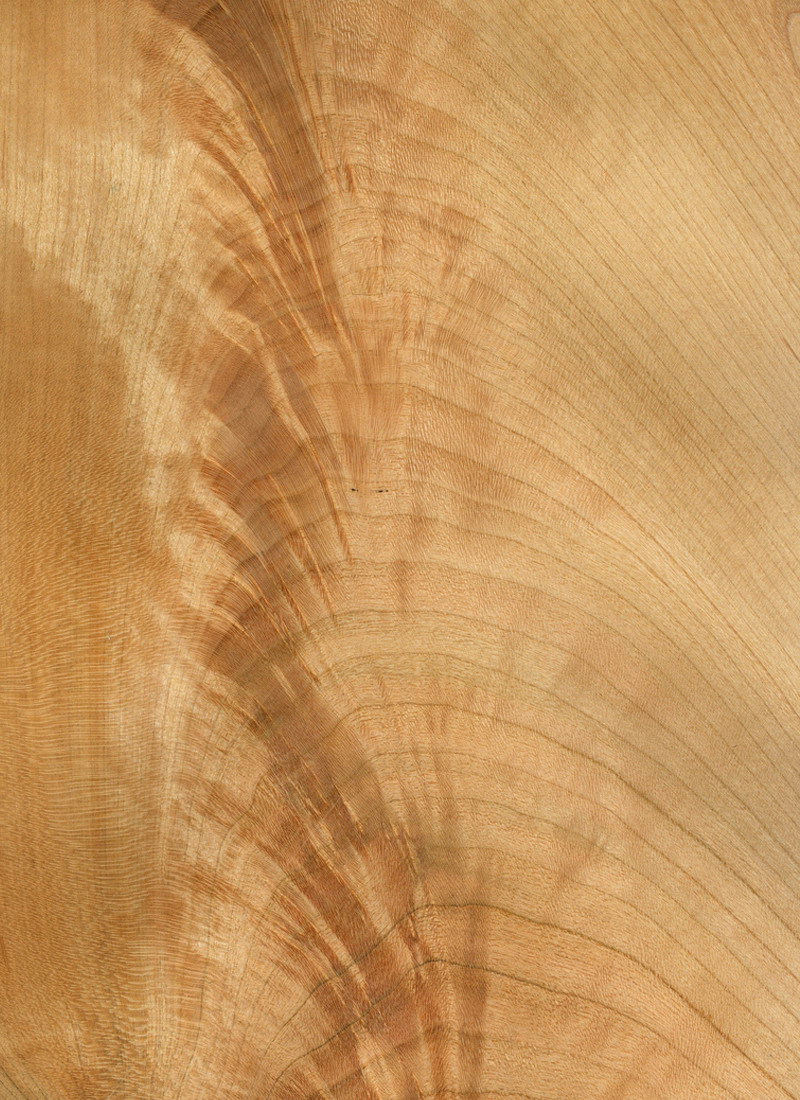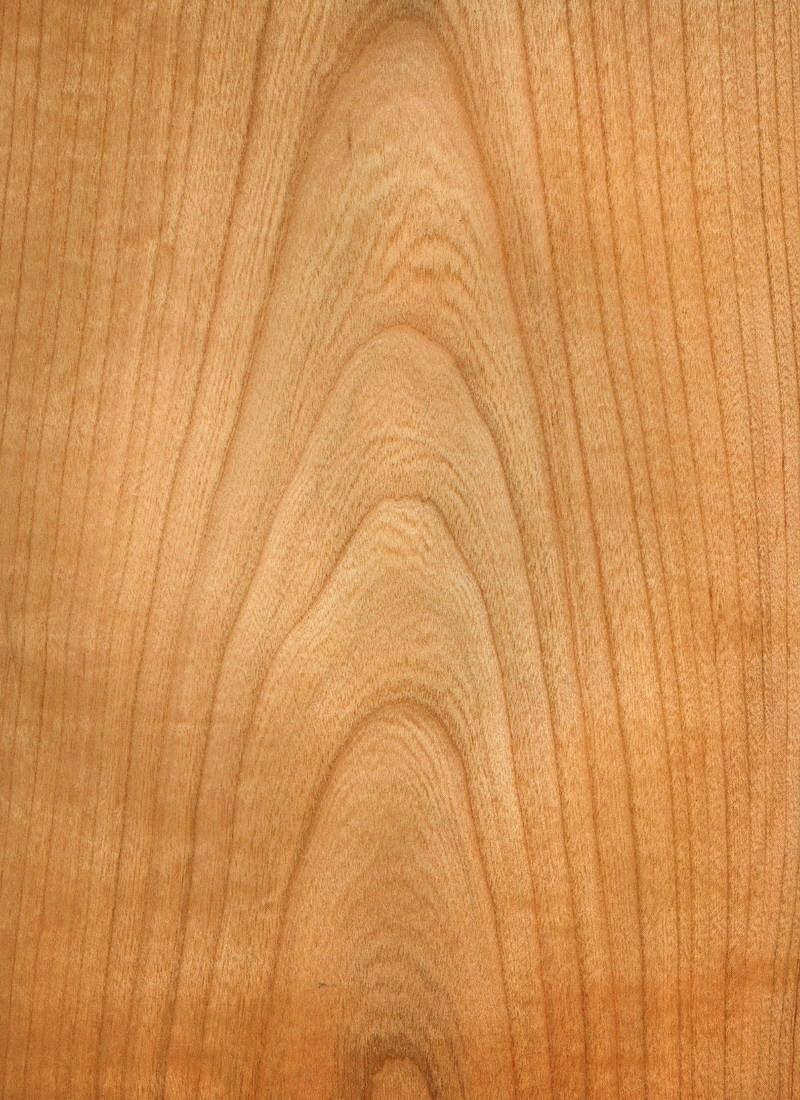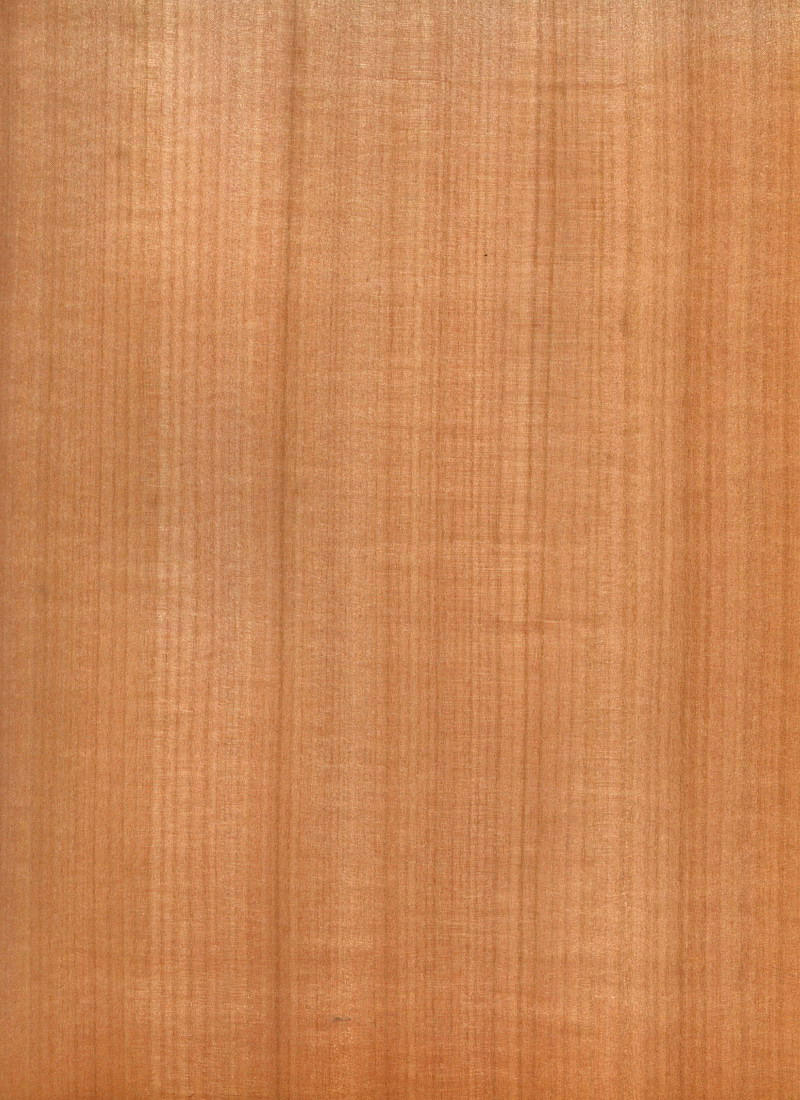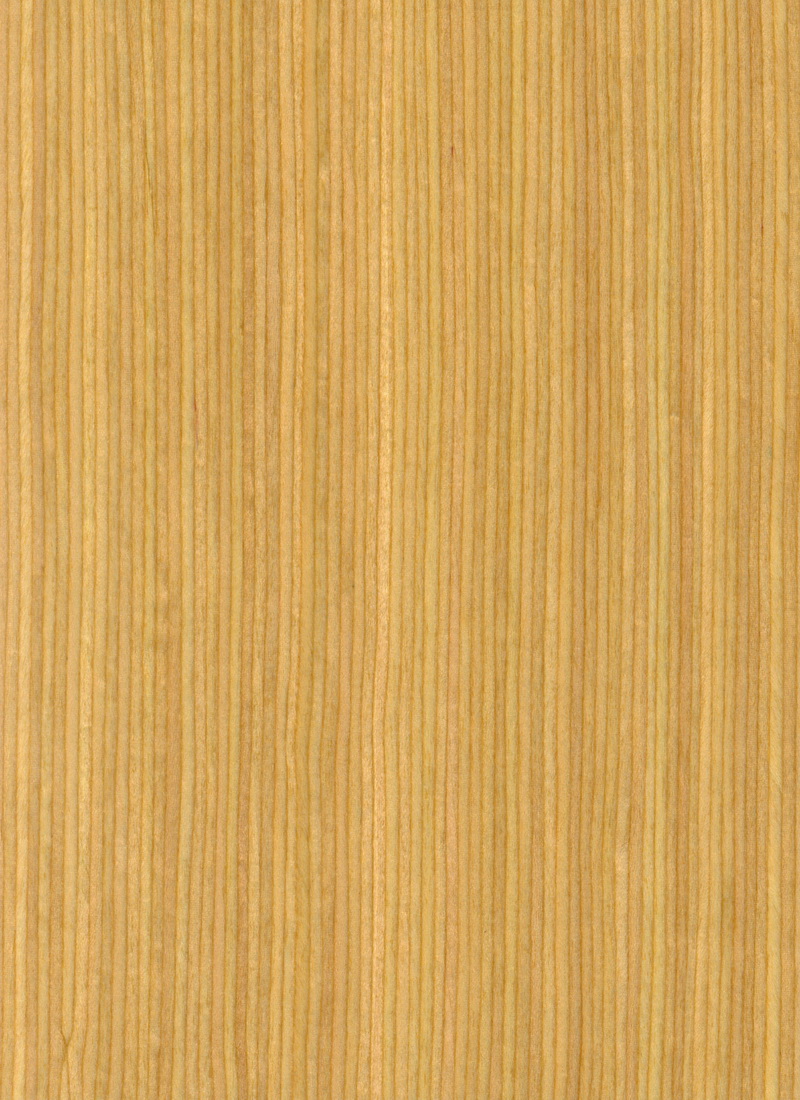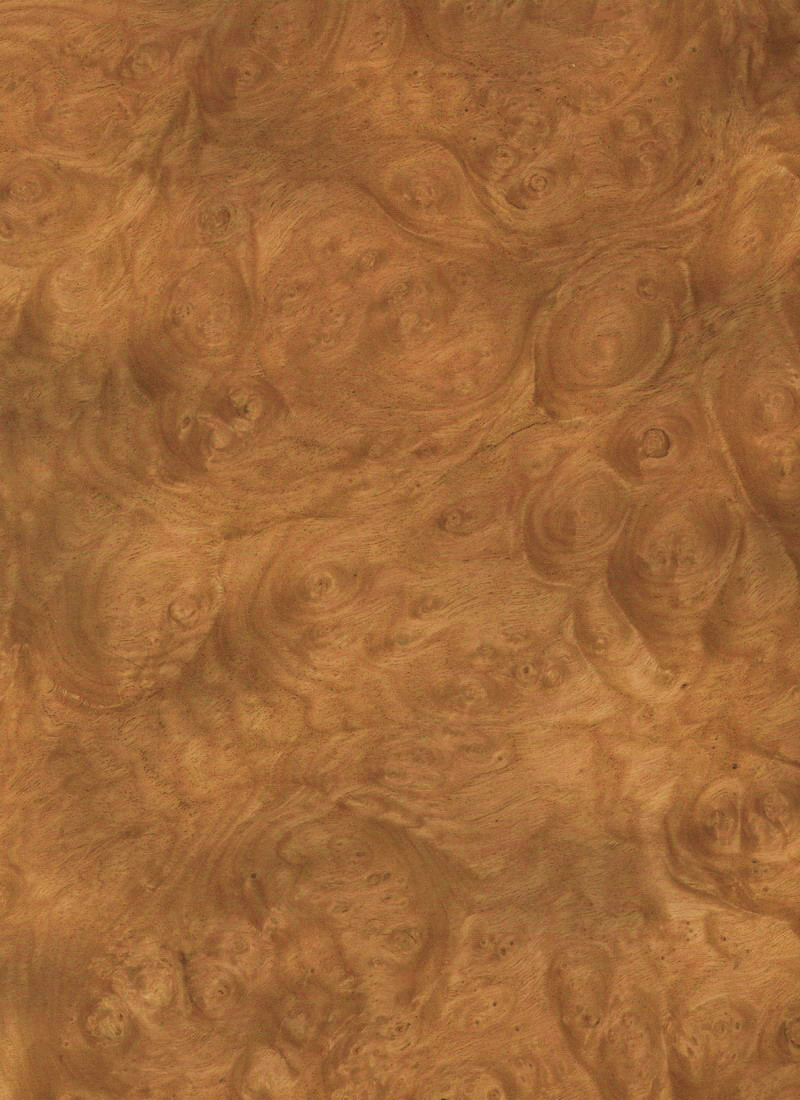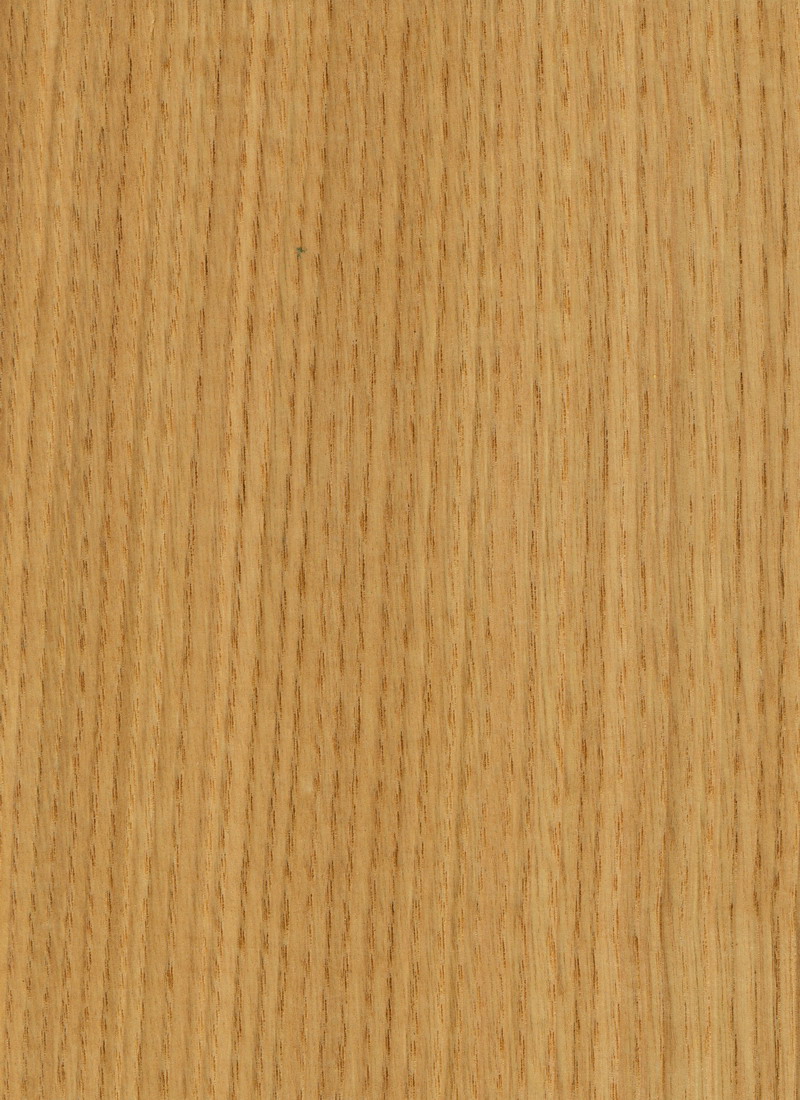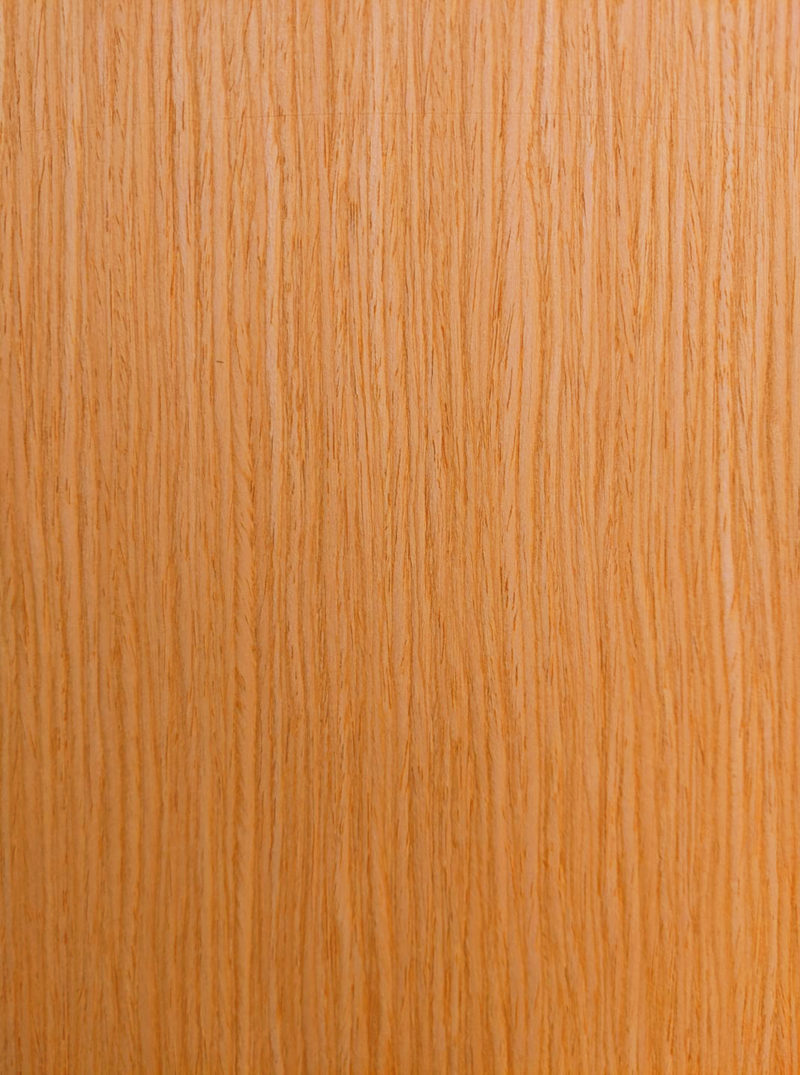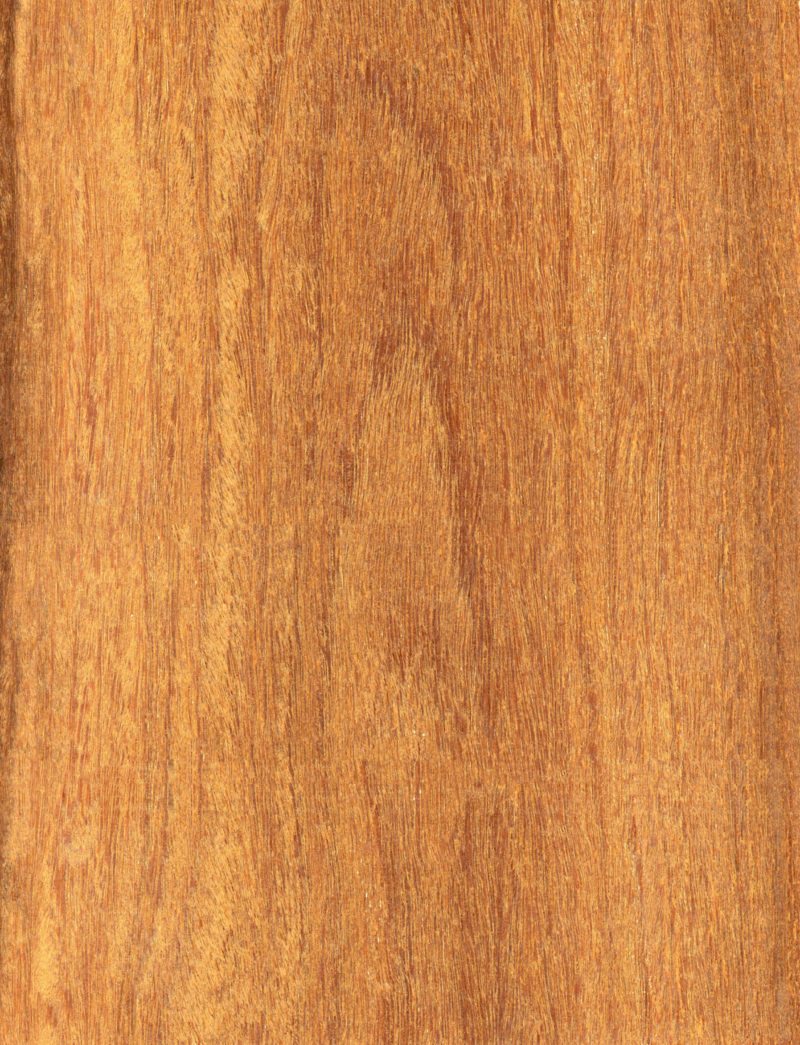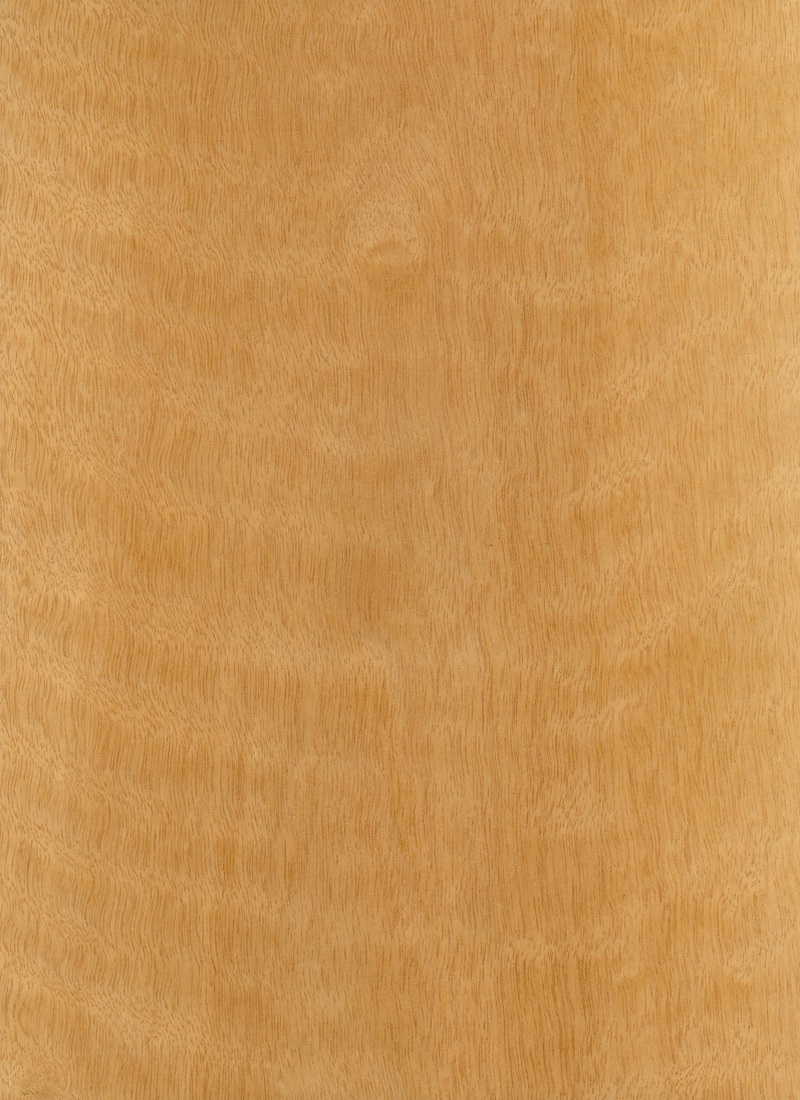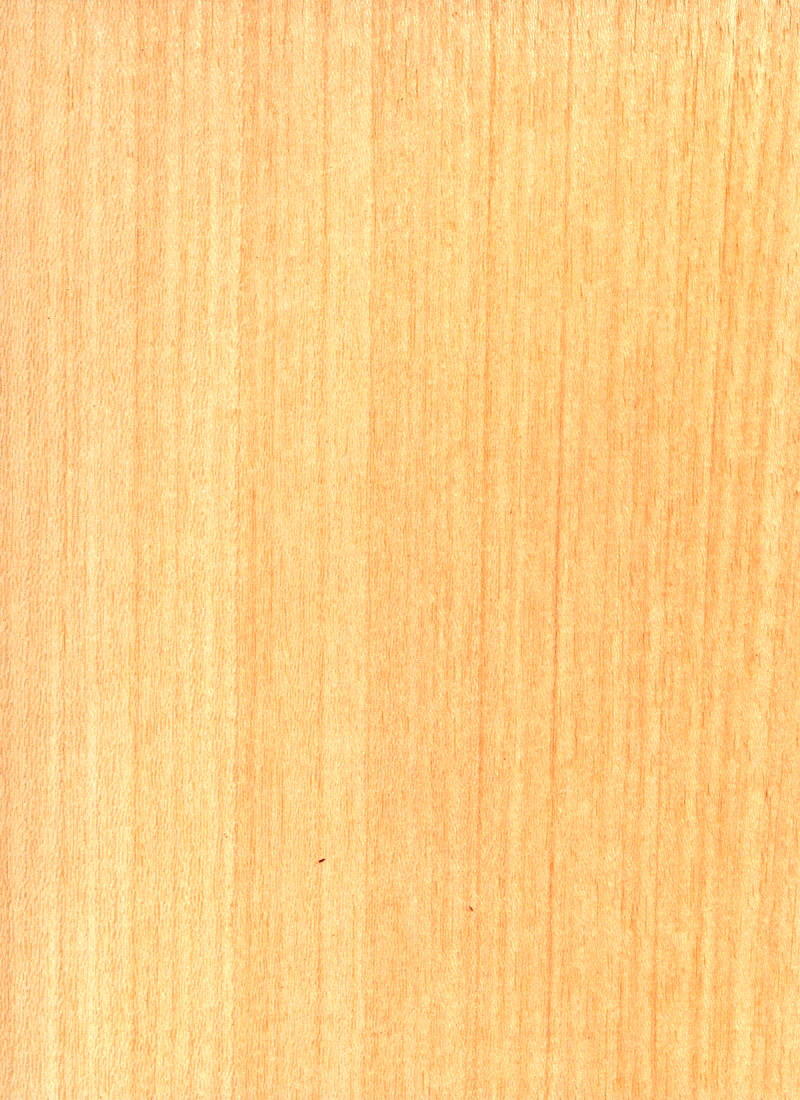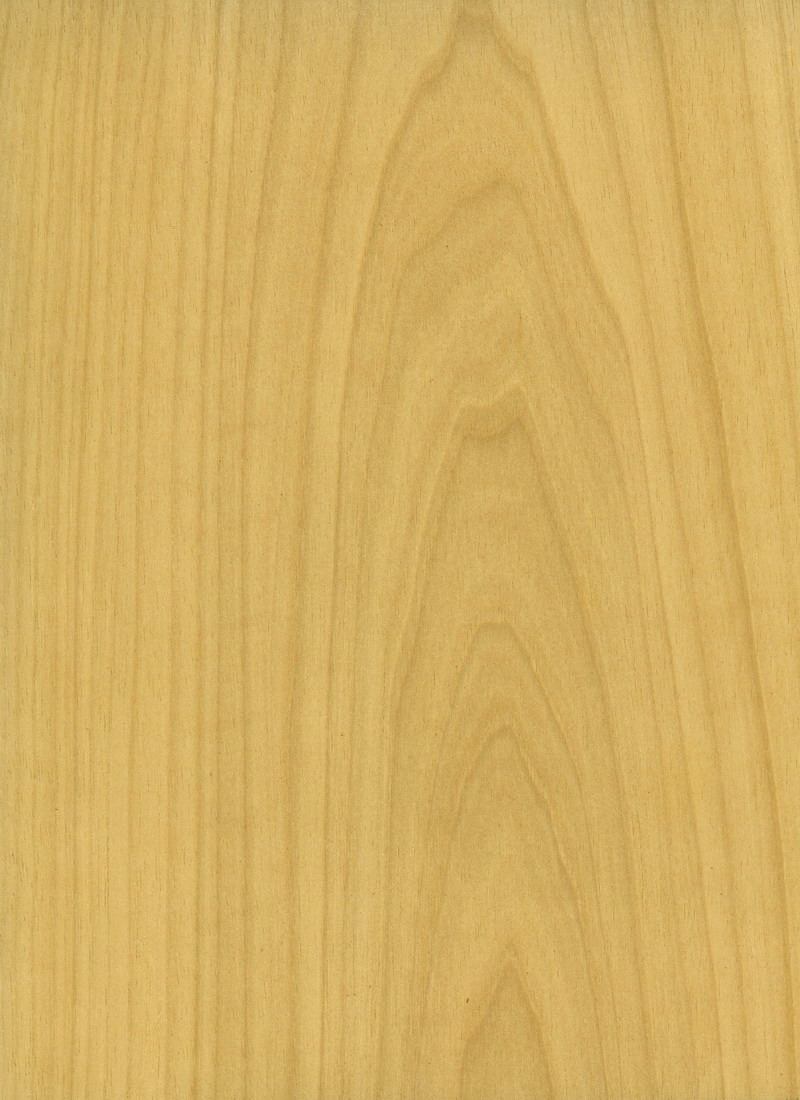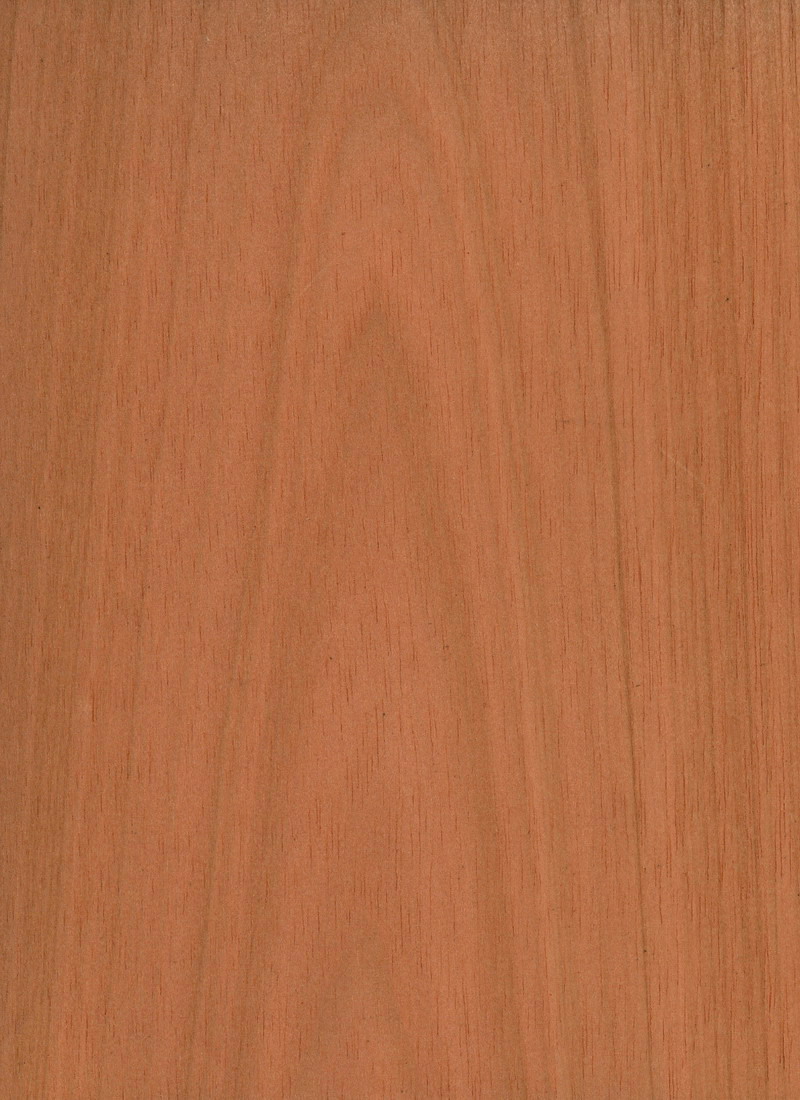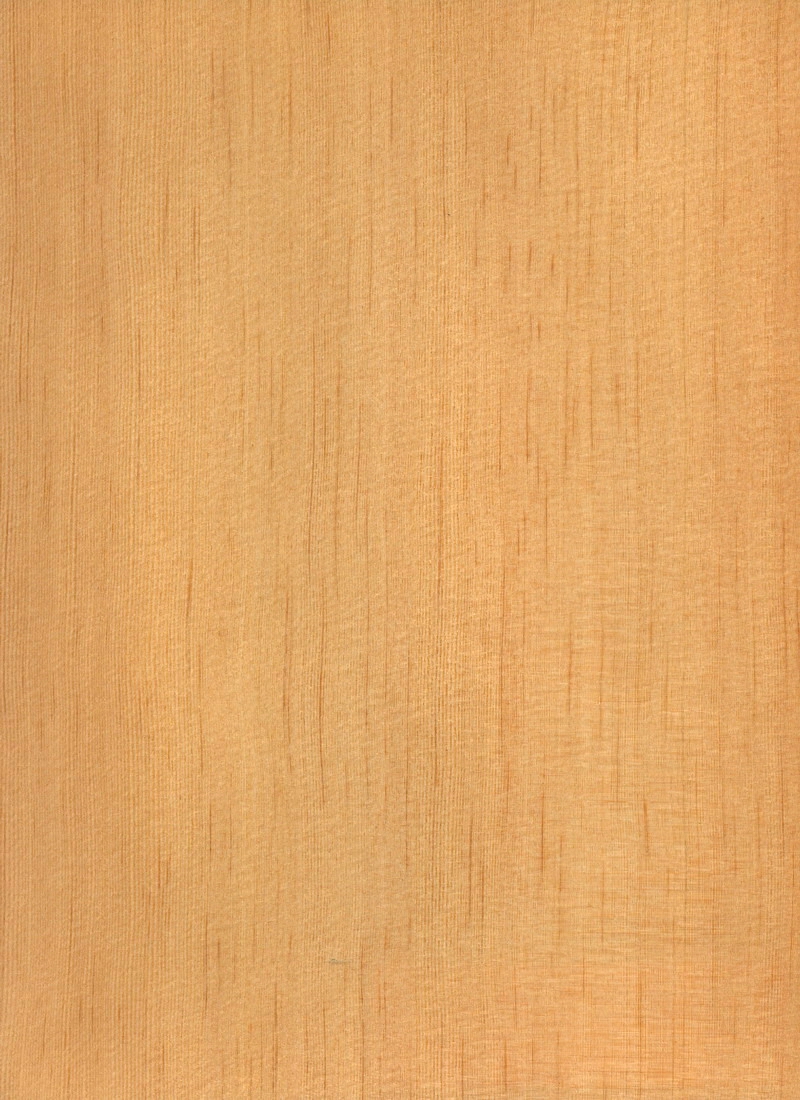Veneer Catalogue
-
 CEDAR SUGIx
CEDAR SUGIxCEDAR SUGI
Cryptomeria japonicaQuarter cut Sugi Cedar wood veneer heartwood is light to medium reddish yellow and brown, and is very attractive after being naturally fumed as well. Also called Japanese cedar.
Common Uses for Quarter Cut Sugi Cedar Wood Veneer: Panels, cabinetry, furniture and millwork.
Region: Asia
[widget id="black-studio-tinymce-5"] -
 CEDAR WESTERN REDx
CEDAR WESTERN REDxCEDAR WESTERN RED
thuja plicataWestern Red Cedar quarter cut wood veneer is light reddish-brown in color. Straight grain with a medium to coarse texture. Darker red or brown streaks are common.
Common Uses for Western Red Cedar Quarter Cut Wood Veneer: Architectural millwork, furniture and cabinetry. Also used for musical instruments.
The Tree: Depending on soil and climate, can grow up to 200 feet with trunk diameters up to a whopping 10 feet.
Region: North America
[widget id="black-studio-tinymce-5"] -
 CEREJEIRAx
CEREJEIRAxCEREJEIRA
amburana cearensisCerejeira flat cut wood veneer heartwood color ranges from a generally uniform golden-yellow to a light brown, sometimes with an orange hue. Interlocked grain. Cerejeira has a medium to high natural luster with a medium to coarse texture. This South American wood emits a sweet smell, similar to vanilla or cumiran.
Cerejeira flat cut wood veneer takes both stains and finishes well.
Common Uses: High-end luxury furniture and store fixtures/accents, as well as architectural millwork, panels and cabinetry.
The Tree: The trees are large, typically reaching heights of up to 80-100 feet, with trunk diameters usually between 25-35 inches.
Region: South America
[widget id="black-studio-tinymce-5"] -
 CEREJEIRA CROTCHx
CEREJEIRA CROTCHxCEREJEIRA CROTCH
amburana cearensisCerejeira crotch wood veneer is yellow to medium brown, sometimes with an orange, or pink, hue. Cerejeira has a medium to high natural luster, along with a medium to coarse texture. This South American wood also emits a sweet smell, similar to vanilla or cumiran.
Common Uses: High-end luxury furniture, as well as architectural millwork, panels and cabinetry.
The Tree: The trees are large, typically reaching heights of up to 80-100 feet, with trunk diameters usually between 25-35 inches.
Region: South America
[widget id="black-studio-tinymce-5"] -
 CEREJEIRA TIGERx
CEREJEIRA TIGERxCEREJEIRA TIGER
amburana cearensisCerejeira Tiger flat cut wood veneer is yellow to medium brown, sometimes with an orange, or pink, hue; also streaked with brown. Cerejeira has a medium to high natural luster, along with a medium to coarse texture. Also emits a sweet smell, similar to vanilla or cumiran.
Common Uses: Furniture, as well as architectural millwork, panels and cabinetry.
The Tree: The trees are large, typically reaching heights of up to 80-100 feet, with trunk diameters usually between 25-35 inches.
Region: South America
[widget id="black-studio-tinymce-5"] -
 CHECHEN AFRICANx
CHECHEN AFRICANxCHECHEN AFRICAN
antiaris africanaAfrican Chechen quarter cut wood veneer closely resembles American Red Gum in aesthetics. Color ranges from creamy white to yellow gray in color. The grain is generally straight, stripey to interlocked.
Common Uses for African Chechen Quarter Cut Wood Veneer: Aircraft interiors, architectural panels, cabinetry, doors and furniture, as well as millwork.
Other Name(s): African Ziricote.
The Tree: A fast growing and large shade tree that is native to Africa. Typically reaches heights between 75-150 feet, with diameters between 2-5 feet.
A Little History: African Chechen is considered one of the more economical trees from Africa. It grows fast and thick. The trees are so large that a single tree can yield 200,000 square feet of veneer.
Region: Africa
[widget id="black-studio-tinymce-5"] -
 CHECHEN SOUTH AMERICANx
CHECHEN SOUTH AMERICANxCHECHEN SOUTH AMERICAN
metopium browneiSouth American Chechen flat cut wood veneer is usually reddish brown with stripey, interlocked grain. Can also have golden and orange hues.
Common Uses for South American Chechen Flat Cut Wood Veneer: Architectural panels, cabinetry, furniture and millwork.
Other Name(s): Chenchen.
The Tree: Can reach heights over 100 feet with 3-5 foot wide trunks.
A Little History: Sometimes called Caribbean Rosewood, although it is not a true Rosewood. This is because of its wide variety of colors and natural luster.
Region: South America
[widget id="black-studio-tinymce-5"] -

 CHERRYx
CHERRYxCHERRY
prunus serotinaCherry flat cut wood veneer is light brown with pink or red overtones. Natural characteristics include gum pockets, pins and figure. Cherry wood veneer also has a satiny finish and fine texture.
Common Uses: An excellent choice for cabinetry and furniture. Also used for architectural panels, acoustic panels and millwork, as well as ceilings and doors.
Other Name(s): American Cherry, also Wild Black Cherry.
The Tree: A handsome tree, typically reaching heights of 60-80 feet, with trunk diameters between 2-3 feet.
A Little History: Used heavily in the 18th century for furniture and cabinets. It was also popular for the backings of musical and scientific instruments.
Region: North America
[widget id="black-studio-tinymce-5"]
-
 CHERRY CROTCHx
CHERRY CROTCHxCHERRY CROTCH
prunus serotinaCherry crotch wood veneer is light pink brown to dark red brown in color with fine, straight, close grain. Has a satiny finish and fine texture.
Common Uses for Cherry Crotch Wood Veneer: Architectural and acoustic panels, millwork, as well as high end cabinetry and furniture.
Other Name(s): American Cherry, Wild Black Cherry.
The Tree: A handsome tree, typically reaching heights of 60-80 feet, with trunk diameters between 2-3 feet.
A Little History: Used heavily in the 18th century for furniture, cabinets and interior trim. Also popular for the backings of musical and scientific instruments.
Region: North America
[widget id="black-studio-tinymce-5"] -
 CHERRY EUROPEANx
CHERRY EUROPEANxCHERRY EUROPEAN
prunus aviumEuropean Cherry flat cut wood veneer heartwood color ranges in pink to warm red and golden brown tones. European Cherry eventually darkens to a deeper golden brown with time and upon light exposure. The grain is very fine and usually straight.
Common Uses for European Cherry Flat Cut Wood Veneer: Architectural millwork, panels, cabinetry, doors, fixtures and furniture, as well as musical instruments.
The Tree: Typically reaches heights between 60-90 feet, with trunk diameters around 1-3 feet.
A Little History: European Cherry is native to Great Britain and Europe. It also grows in the mountains of North Africa and southeast Asia.
Region: Europe
[widget id="black-studio-tinymce-5"] -
 CHERRY FIRELANDx
CHERRY FIRELANDxCHERRY FIRELAND
nothofagus pumilioFireland Cherry quarter cut wood veneer has pleasant red tones. Colors can also range from creamy off-white, to creamy red to pale brown, generally with a pink cast. Straight grain with a fine texture.
Common Uses for Fireland Cherry Quarter Cut Wood Veneer: Architectural panels, cabinetry, doors and furniture, as well as millwork.
The Tree: A native South American tree, typically reaching heights between 90-120 feet, with trunk diameters of about 5 feet.
Region: South America
[widget id="black-studio-tinymce-5"] -

 CHERRY VTEC QUARTER CUTx
CHERRY VTEC QUARTER CUTxCHERRY VTEC QUARTER CUT
triplochiton scleroxylonInnovative, eco-friendly, timeless.
We offer Cherry Vtec in a quarter cut grain, in addition to traditional Cherry wood veneer. Cherry Vtec quarter cut is 100% wood. Also known as Reconstituted Cherry or Cherry Recon Veneer.
25″ x 99″ Sheet Product ID: 32290
25″ x 122″ Sheet Product ID: 32298
50″ x 99″ Sheet Product ID: 32242
50″ x 122″ Sheet Product ID: 33904About Cherry Reconstituted Veneer
Cherry Recon Veneer is made from Ayous, which is legally harvested with SCS certification, or from plantation grown Poplar or Basswood for close-grain patterns.
Years from now, you can match your original purchase in exact color, grain structure and pattern – an excellent choice when matching large quantities of desks, doors, paneling, and more. Our engineering process is also eco-friendly. We can replicate patterns (such as ebony or teak) from fast growth trees. You get the exquisite look of a unique veneer at an affordable price.
FSC® 100% available upon request for all patterns, subject to availability and possible extended lead times.
Region: Asia
[widget id="black-studio-tinymce-5"]
-
 CHESTNUT BURLx
CHESTNUT BURLxCHESTNUT BURL
castanea sativaEuropean Chestnut burl wood veneer is generally a rich light brown and may darken to a reddish brown with age. The grain can be straight to spiral, or interlocked. Coarse texture.
Common Uses for European Chestnut Flat Cut Wood Veneer: Architectural panels, millwork, cabinetry and furniture, as well as auto interiors.
Other Name(s): Sweet Chestnut.
The Tree: Native to Europe; often reaches heights between 100-120 feet with trunks usually between 4-7 feet.
A Little History: Chestnut wood was historically used for items meant to last, like furniture and shingles.
Region: Europe
[widget id="black-studio-tinymce-5"] -
 CHESTNUT EUROPEANx
CHESTNUT EUROPEANxCHESTNUT EUROPEAN
castanea sativaEuropean Chestnut flat cut wood veneer ranges from a straw color to a light brown. Darkens to a reddish brown with age. The grain can be straight to spiral, or interlocked. Coarse texture.
Common Uses for European Chestnut Flat Cut Wood Veneer: Architectural panels, millwork, cabinetry and doors, as well as furniture.
Other Name(s): Sweet Chestnut.
The Tree: Native to Europe; often reaches heights between 100-120 feet with trunks usually between 4-7 feet.
A Little History: Historically used for items meant to last, like furniture and shingles.
Region: Europe
[widget id="black-studio-tinymce-5"] -
 CHESTNUT EUROPEANx
CHESTNUT EUROPEANxCHESTNUT EUROPEAN
castanea sativaEuropean Chestnut quarter cut wood veneer ranges from a straw color to a light brown. Darkens to a reddish brown with age. The grain can be straight to spiral, or interlocked. Coarse texture.
Common Uses for European Chestnut Quarter Cut Wood Veneer: Architectural panels, millwork, cabinetry and doors, as well as furniture.
Other Name(s): Sweet Chestnut.
The Tree: Native to Europe; often reaches heights between 100-120 feet with trunks usually between 4-7 feet.
A Little History: Historically used for items meant to last, like furniture and shingles.
Region: Europe
[widget id="black-studio-tinymce-5"] -

 CHESTNUT VTEC QUARTER CUTx
CHESTNUT VTEC QUARTER CUTxCHESTNUT VTEC QUARTER CUT
triplochiton scleroxylonInnovative, eco-friendly, timeless.
We offer Chestnut Vtec in a quarter cut grain, in addition to various cuts of traditional Chestnut wood veneer. Chestnut Vtec quarter cut is 100% wood. Also known as Chestnut Reconstituted or Chestnut Recon wood veneer.
25″ x 99″ Sheet Product ID: 33853
Please note that this pattern is available in 50″ widths as well; a small processing fee is added for production.
About Chestnut Recon Veneer
Chestnut Reconstituted Veneer is made from Ayous, which is legally harvested with SCS certification, or from plantation grown Poplar or Basswood for close-grain patterns.
Years from now, you can match your original purchase in exact color, grain structure and pattern – an excellent choice when matching large quantities of desks, doors, paneling, and more. Our engineering process is also eco-friendly. We can replicate patterns (such as ebony or teak) from fast growth trees. You get the exquisite look of a unique veneer at an affordable price.
FSC® 100% available upon request for all patterns, subject to availability and possible extended lead times.
Region: Asia
[widget id="black-studio-tinymce-5"]
-
 COCOBOLOx
COCOBOLOxCOCOBOLO
dalbergia retusaCocobolo flat cut wood veneer heartwood colors can range from shades of brown with black or purple streaks to yellow, orange or deep red. The sapwood is a very light yellow in comparison to the rich heartwood. It stains and finishes beautifully and easily. It also has a high oil content, a common characteristic of Rosewood.
Common Uses for Flat Cut Cocobolo Wood Veneer: Fine furniture, both acoustic and architectural paneling, and in luxury aircraft and yachts. Most notably, its acoustic properties make it a prime choice for musical instruments, especially guitars.
Other Name(s): Nicaragua Rosewood.
The Tree: A native South American tree, reaching heights of 45-60 feet, with trunk diameters generally about 2 feet.
A Little History: Cocobolo is one of the most important woods in the cutlery trade. Extensively used for knife handles because of its beautiful color, texture, grain and waterproof properties.
Region: South America
[widget id="black-studio-tinymce-5"] -
 CUMARUx
CUMARUxCUMARU
dipteryx odorataCumaru flat cut wood veneer heartwood is medium to dark brown while having a reddish hue; some pieces may have streaks of yellowish or greenish brown. Sometimes golden.
Common Uses for Cumaru Flat Cut Wood Veneer: Architectural millwork, cabinetry and doors, as well as musical instruments.
Other Name(s): Kumaru.
The Tree: Native to South America; often reaching heights of 90+ feet with trunks usually around 3 feet.
Region: South America
[widget id="black-studio-tinymce-5"] -
 CURUPIXAx
CURUPIXAxCURUPIXA
micropholis venulosaCurupixa flat cut figured wood veneer heartwood is light to medium beige, with some pink. Texture is fine, uniform and also smooth.
Common Uses for Figured Curupixa Flat Cut Wood Veneer: Architectural panels, millwork, doors, and furniture, as well as aircraft and auto interiors.
The Tree: Native to South America; often reaches heights between 100-115 feet with trunks between 1-4 feet.
Region: South America
[widget id="black-studio-tinymce-5"] -

 CYPRESSx
CYPRESSxCYPRESS
taxodium distichumCypress flat cut wood veneer varies from a light, yellowish red to a salmon color. Has a distinct, leafy grain and can have an attractive crotch figure. Medium to coarse texture.
Common Uses for Flat Cut Cypress Wood Veneer: Architectural panels, millwork, cabinetry and doors, as well as furniture.
Other Name(s): Baldcypress.
The Tree: Native to North America; grows to heights of 80-120 feet with trunk diameters between 3-5 feet.
A Little History: Develops unique root systems that stick up above the ground or water. These are especially seen on the trees growing in swampy areas.
Region: North America
[widget id="black-studio-tinymce-5"]
-

 CYPRESSx
CYPRESSxCYPRESS
taxodium distichumCypress quarter cut wood veneer varies from a light, yellowish red to a salmon color. Has a distinct, leafy grain and can have an attractive crotch figure. Medium to coarse texture.
Common Uses for Quarter Cut Cypress Wood Veneer: Architectural panels, millwork, cabinetry and doors, as well as furniture.
Other Name(s): Baldcypress.
The Tree: Native to North America; grows to heights of 80-120 feet with trunk diameters between 3-5 feet.
A Little History: Develops unique root systems that stick up above the ground or water. These are especially seen on the trees growing in swampy areas.
Region: North America
[widget id="black-studio-tinymce-5"]
-
 DEDALEROx
DEDALEROxDEDALERO
lafoensia spp.The heartwood of Dedalero flat cut wood veneer is brown to yellow orange, while the sapwood is yellow-brown with red or pink undertones. The grain is straight, and may show some interlock with figure. The texture is also fine to coarse.
Common Uses for Dedalero Flat Cut Wood Veneer: Architectural millwork, furniture, fixtures and doors.
The Tree: A medium-sized tree, typically reaching heights of 30-60 feet, with trunk diameters between 1-2 feet.
Region: South America
[widget id="black-studio-tinymce-5"] -
 DEDALERO DYEDx
DEDALERO DYEDxDEDALERO DYED
lafoensia spp.Dyed Dedalero flat cut wood veneer heartwood is a warm reddish brown. The grain is straight, and may show some interlock with figure. The texture is also fine to coarse.
Common Uses for Dyed Dedalero Flat Cut Wood Veneer: Architectural millwork, furniture, fixtures and doors.
The Tree: A medium-sized tree, typically reaching heights of 30-60 feet, with trunk diameters between 1-2 feet.
Region: South America
[widget id="black-studio-tinymce-5"] -

 DOUGLAS FIRx
DOUGLAS FIRxDOUGLAS FIR
pseudotsuga menziesiiDouglas Fir quarter cut wood veneer is usually a consistent and rich red brown or light yellow, with a fine texture. Also very tight, straight grain with pinstripe like contrast.
Common Uses for Douglas Fir Quarter Cut Wood Veneer: Architectural and acoustic panels, millwork, as well as ceilings and doors. Also popular for cabinetry and furniture making.
Other Name(s): Oregon Pine.
The Tree: Reaches heights of over 200 feet, with trunk diameters between 3-12 feet. Some trees may be 500-1,000 years old.
A Little History: Douglas Fir is a fast growth tree and the wood has been used historically for building purposes.
Region: North America
[widget id="black-studio-tinymce-5"]

